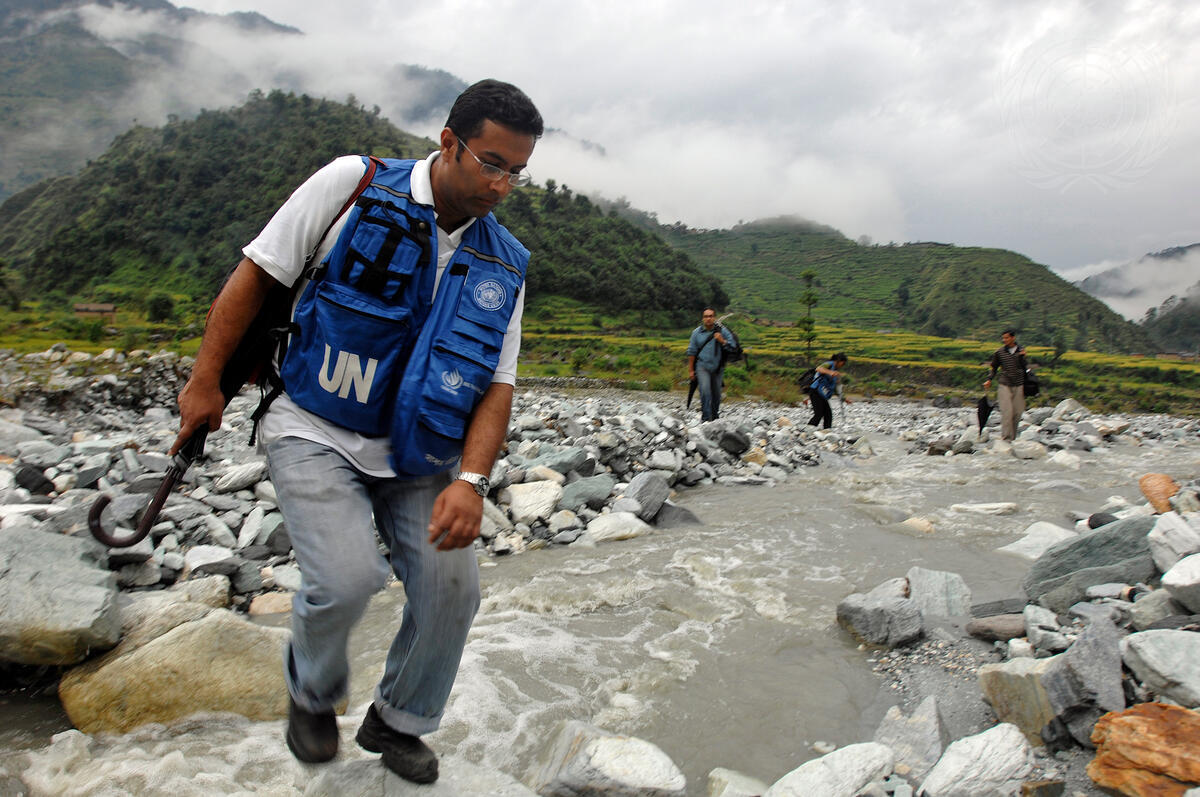The international community has marked August 19th as World Humanitarian Day (WHD) since its designation by the UN General Assembly in 2008. This historic decision was taken five years after the bombing of the UN Headquarters in Baghdad on 19 August 2003, which led to the death of 22 humanitarians. WHD honors all humanitarian aid organizations, and workers who have lost their lives in carrying out their duties and those who have contributed to the advancement of humanitarian efforts. The objective of these efforts is to alleviate the suffering of the victims of armed conflicts and natural disasters.
Annually, WHD highlights a theme that promotes the well-being of those affected by crises and endorses the safety and security of the humanitarians. This year’s focus is on the climate crisis and its immediate human cost and it must be acknowledged that this type of humanitarian intervention comes with its own set of challenges. As a top driver of humanitarian need, climate change causes human suffering, especially in poor countries, by affecting the ecosystem, natural resources, agricultural productivity, and physical infrastructure. In the short term, it leads to weather-related hazards such as hurricanes and droughts which compel people to flee from their homes and threaten their livelihoods. In the long term, climate change results in the loss of biodiversity and gradual degradation of the environment. Additionally, climate change can indirectly fuel conflicts by diminishing resources and increasing the likelihood of violence to obtain access to fertile land. Another indirect effect of climate change is the increase in the prices of food, energy, and other critical commodities, translating into a growing debt burden.
Consequently, climate change remains one of the greatest threats to the full and equal enjoyment of human rights (Universal Declaration of Human Rights) . It particularly restricts the rights to life, adequate standard of living, health, property, water and sanitation, food, and housing. Through the case of Nepal, this article seeks to explore the effects of climate change on human rights, whose protection lies at the core of humanitarian work. Nepal has diverse climate types extending from the tropical zone in the south and highlands in the north featuring Himalayan Mountains. Accordingly, the livelihoods of Nepalese are contained within various ecosystems localized by specific micro-climate. Mainly, the South Asian monsoon system is the source of irrigation for agriculture.
Due to its geographic location, the Federal Democratic Republic of Nepal is highly exposed to hazards induced by climate change, specifically changes in monsoon patterns such as more intensive rainfalls and a shorter season. Therefore, Nepalese experience a higher number of droughts, floods, and landslides each year, leading to an increase in causalities. Quite recently, torrential rains followed by floods took lives, destroyed crops and houses together with belongings, caused injuries and displacement, and damaged critical infrastructure in Nepal. Combined with the effects of the pandemic, the flood pushed millions of Nepalese into extreme levels of food insecurity and inadequate access to water. Particularly, damaged infrastructure such as washed-away bridges impeded humanitarians’ access to the affected population.
Furthermore, Nepal is one of the poorest nations in the world. 80% of the country’s population lives in rural areas, relies on agriculture for their livelihoods, and thus, has a greater dependence on natural resources. As a result, climate change disproportionately impacts this vulnerable group of population with limited adaptive capacity. Moreover, it exacerbates existing vulnerabilities in rural areas originating from poverty, physical isolation, and lower levels of education. Yet, rural women face a stronger negative impact due to the systemic gender inequality that excludes them from decision-making. Moreover, women have limited mobility as well as restricted access to the land and other critical resources. As the caregivers of their family, they also shoulder a higher level of burden in case of natural disasters. This increases their overall amount of labor and leads to further disempowerment of women.
Overall, Nepal’s case demonstrates how climate change restricts the full and equal enjoyment of human rights. Nevertheless, the country has been taking steps towards better disaster preparedness, risk management, building resilience to climate change, embracing an inclusive approach, and recognizing specific vulnerabilities. For instance, Nepal has established early-warning systems, expanded climate-smart agriculture, promoted rural energy for rural livelihoods, and undertook solutions based on the ecosystem. Moreover, female representation has increased in the Nepalese parliament in the last decade. In the rural areas, women have gained opportunities to develop their skills and knowledge through women’s leadership programs, which prepare them for leadership positions.
Although Nepal still has developmental challenges to overcome, the country has made progress on inclusive strategies for climate change adaptation. This progress has been catalyzed by the efforts of humanitarian aid international organizations, to name a few, the Humanitarian Country Team, Cooperative for Assistance and Relief Everywhere (CARE), United States Agency for International Development (USAID), United Nations Office for the Coordination of Humanitarian Affairs (OCHA), United Nations Population Fund (UNFPA), European Civil Protection and Humanitarian Aid Operations, Médecins Sans Frontières (MSF), Swiss Humanitarian Aid, and Nepal Red Cross Society (NRCS).
Image – UN Photo Digital Asset Management System

